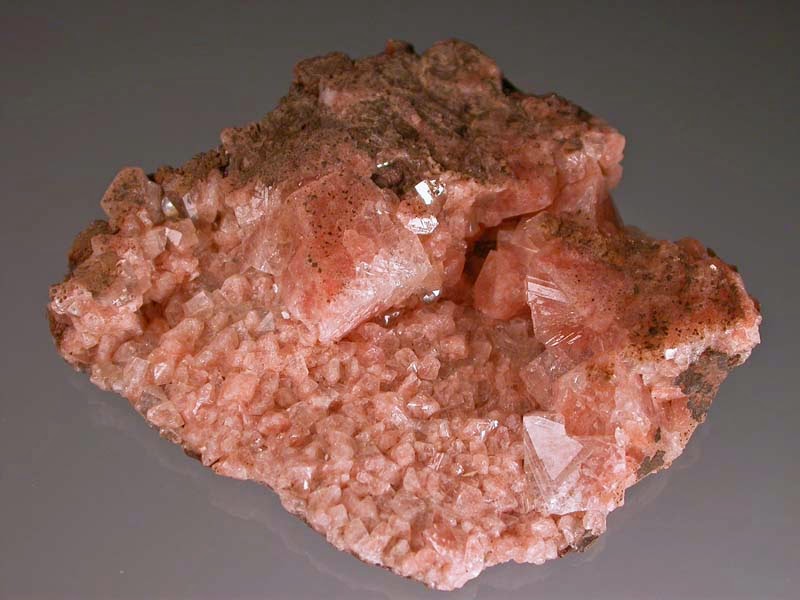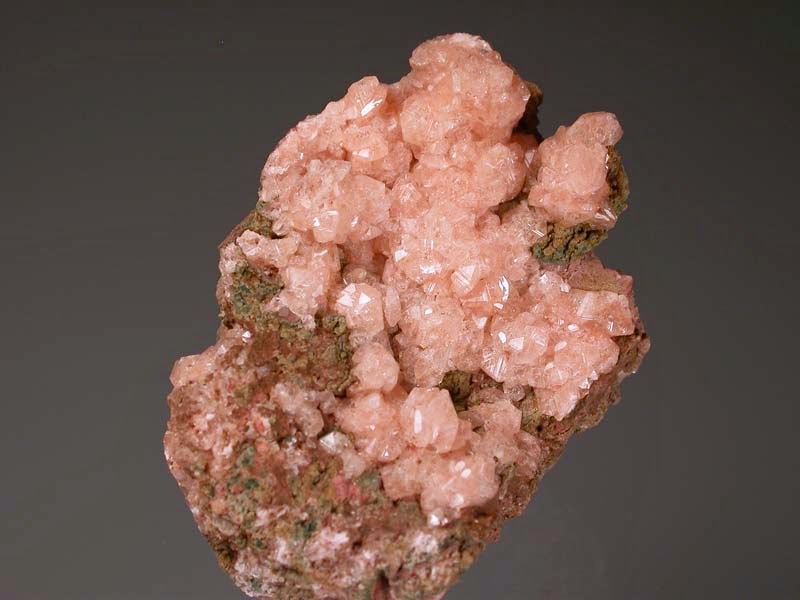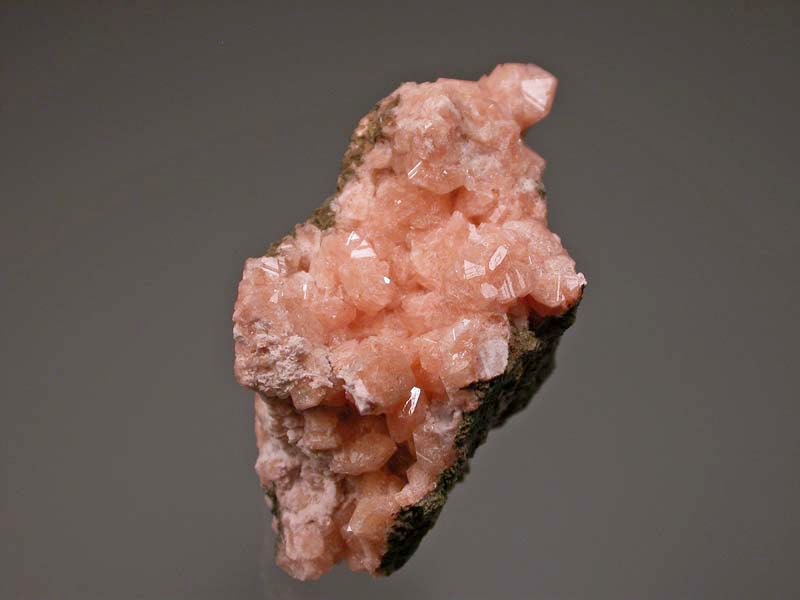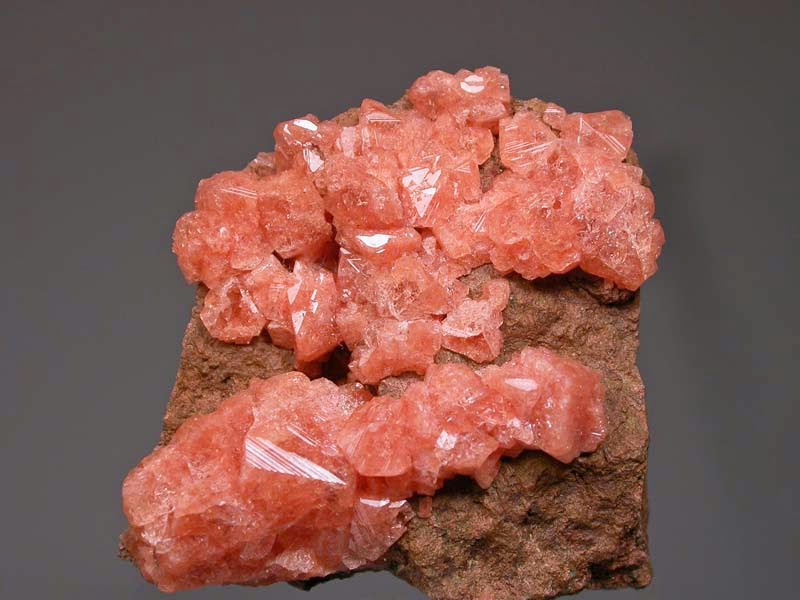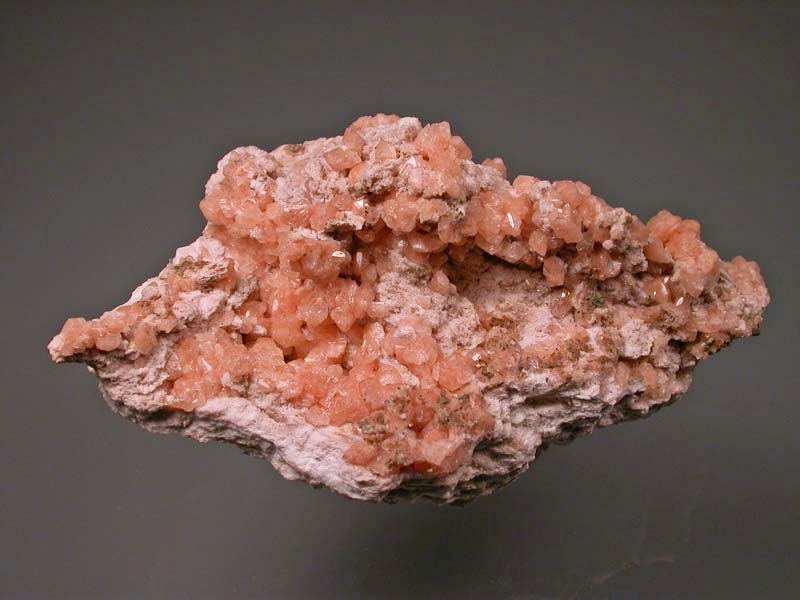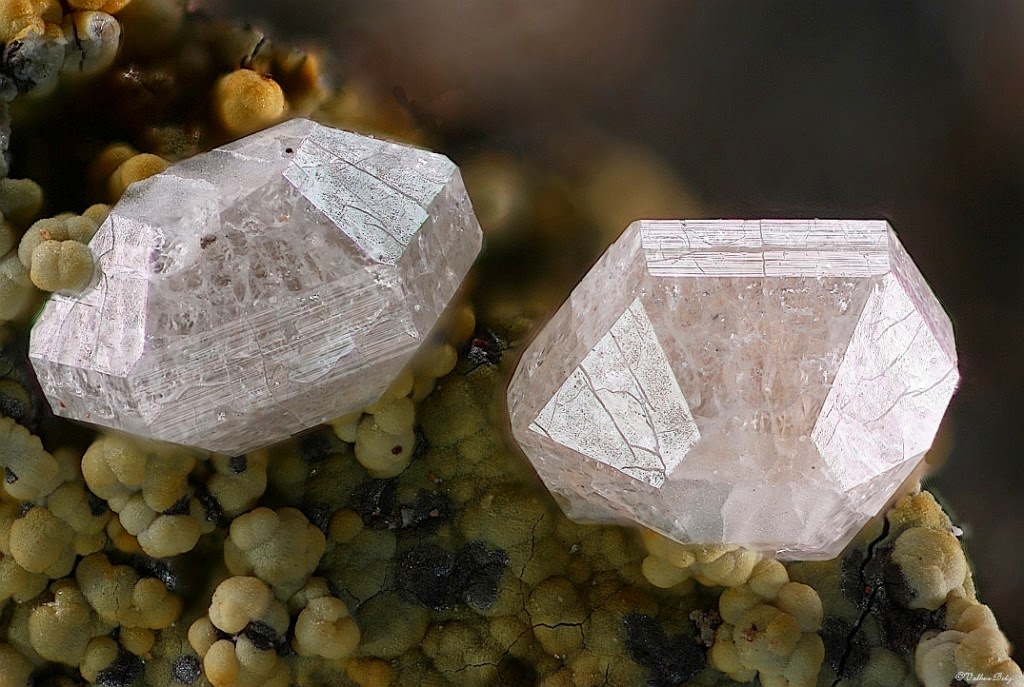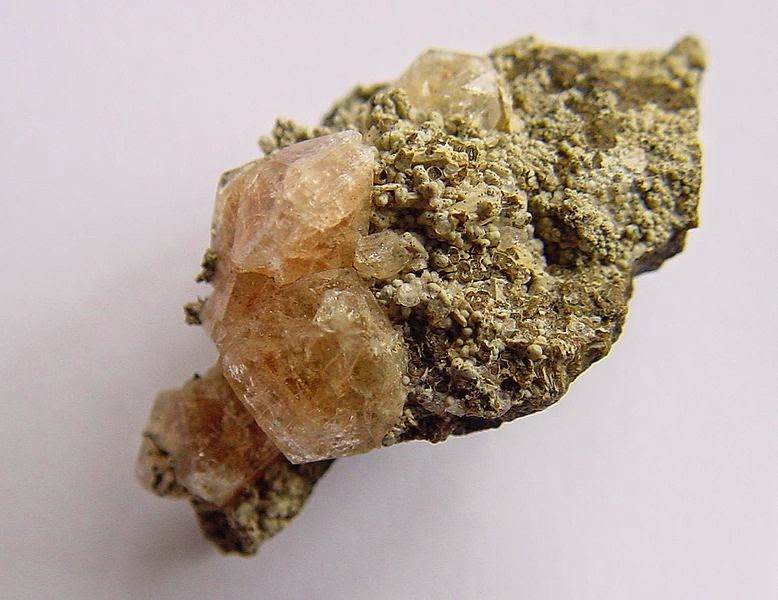
Chemical Formula: (Na2,Ca)[Al2Si4O12]·6H2O
Locality: Montecchio Maggiore, Vicenza, Italy.
Name Origin: Named after the German mineralogist and chemist, Christian Gottlob Gmelin (1792-1860) of Turbingen, Germany. Na modifier added by the zeolite nomenclature committee.
Gmelinite-Na is one of the rarer zeolites but the commonest member of the gmelinite series, gmelinite-Ca, gmelinite-K and gmelinite-Na. It is closely related to the very similar mineral chabazite. Gmelinite was named as a single species in 1825 after Christian Gottlob Gmelin (1792–1860) professor of chemistry and mineralogist from Tübingen, Germany, and in 1997 it was raised to the status of a series.
Gmelinite-Na has been synthesised from Na-bearing aluminosilicate gels. The naturally occurring mineral forms striking crystals, shallow, six sided double pyramids, which can be colorless, white, pale yellow, greenish, orange, pink, and red. They have been compared to an angular flying saucer.
Physical Properties
Cleavage: {1010} Good, {0001} Parting
Color: White, Reddish white, Pink, Greenish white, Flesh red.
Density: 2.03 – 2.17, Average = 2.09
Diaphaneity: Transparent to translucent
Fracture: Brittle – Uneven – Very brittle fracture producing uneven fragments.
Hardness: 4.5 – Between Fluorite and Apatite
Luster: Vitreous – Dull
Streak: white
Photos :
